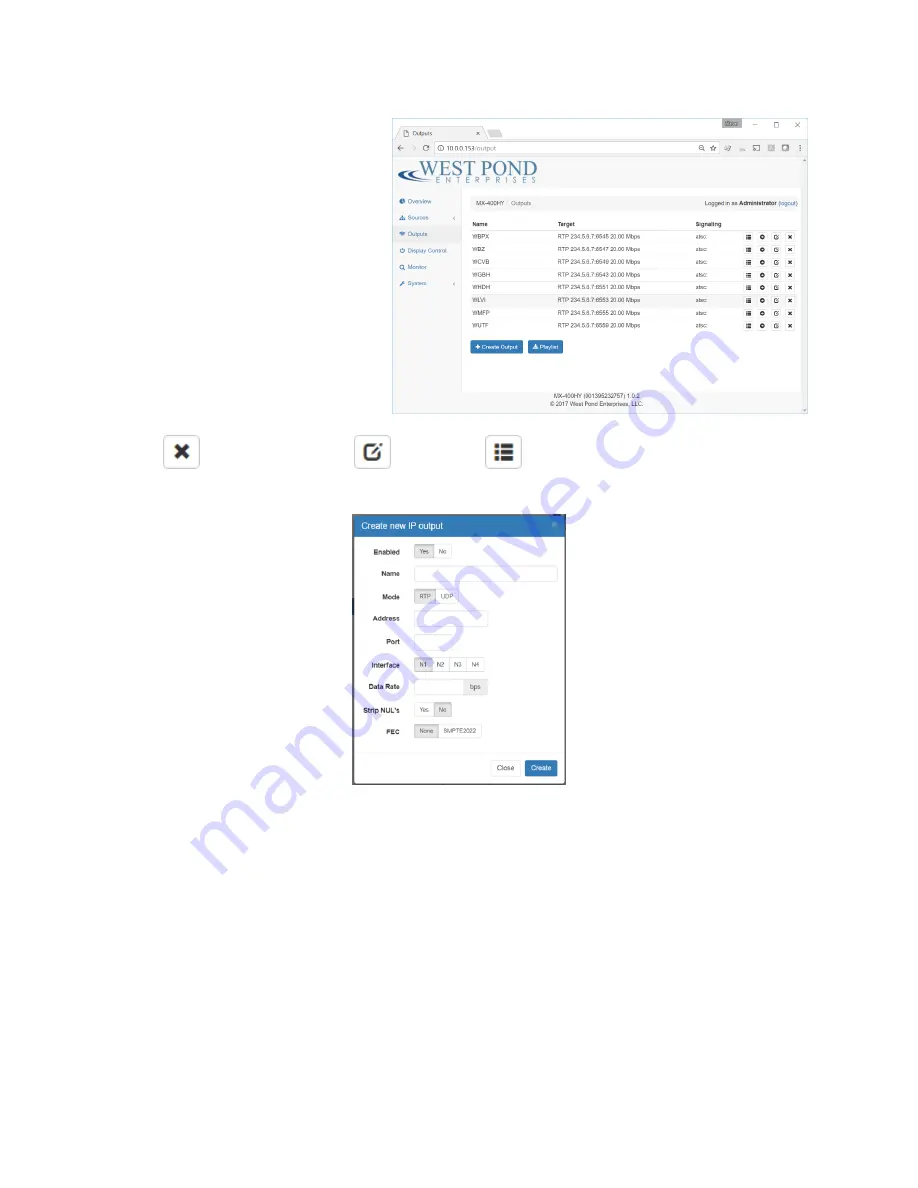
Confidential
Page 14
Outputs
An Output is the output feed of the
multiplexor. As this is a software
multiplexor, there is no specified limit
to the number of outputs. From a
practical perspective, it’s best to limit
the bandwidth consumed by the sum
total of all outputs to less than 500
Mb/s. The multiplexor outputs are
MPEG2 transport streams. Each MPEG
TS output must be specified and is
shown on this page. New outputs are
created by clicking on the “Create
Output” icon. Existing outputs can be
deleted
, modified (properties)
, and mapped
through the multiplexor (program
mapping). The “create” and “modify” dialog boxes are very similar.
Give the output a friendly name. Keep in mind that this name will be used as the description if/when
you generate an m3u playlist. Next select UDP vs. RTP. UDP is raw UDP. The RTP protocol, which is also
transmitted using UDP, is more robust because the packets are numbered. Additional robustness can be
added using SMPTE2022 FEC, but this is only beneficial if the receiving device can utilize the FEC data.
The IP addresses and port fields are self-explanatory. Multicast addresses are supported. The Data Rate
used must be sufficient to contain the multiplex transport that is being assigned to this output. If
insufficient, clipping will occur and an error will be shown on the Overview page. Nul stripping reduces
the network traffic and is recommended for non CBR applications. MPEG transport streams require
signaling that is compatible with the transport and targeting receiving devices. For example, if the IP
output is feeding an edge QAM modulator for the US market, select US Cable for signaling.

























